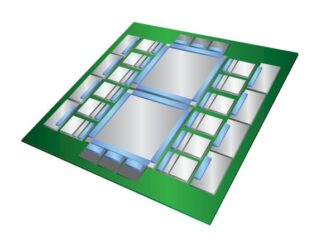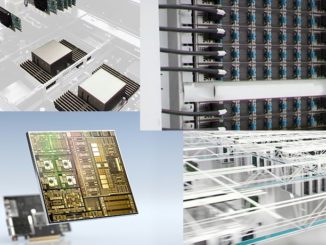
Quantum simulators are a strange breed of systems for purposes that might seem a bit nebulous from the outset. These are often HPC clusters with fast interconnects and powerful server processors (although not usually equipped with accelerators) that run a literal simulation of how various quantum circuits function for design and testing of quantum hardware and algorithms. Quantum simulators do more than just test. They can also be used to emulate quantum problem solving and serve as a novel approach to tackling problems without all the quantum hardware complexity.
Despite the various uses, there’s only so much commercial demand for quantum simulators. Companies like IBM have their own internally and for others, Atos/Bull have created these based on their big memory Sequanna systems but these are, as one might imagine, niche machines for special purposes. Nonetheless, Nvidia sees enough opportunity in this arena to make an announcement at their GTC event about the performance of quantum simulators using the DGX A100 and its own custom-cooked quantum development software stack, called CuQuantum.
After all, it is probably important for Nvidia to have some kind of stake in quantum before (and if) it ever really takes off, especially in large-scale and scientific computing. What better way to get an insider view than to work with quantum hardware and software developers who are designing better codes and qubits via a benchmark and testing environment?
The thing is, most of the quantum hardware makers have their own tools for quantum circuit simulation. And aside from the commercially available Atos/Bull system, there are more than 300 quantum simulators in use today on different experimental (generally academic) platforms, according to one of the seminal survey/reviews on the state of quantum simulators. These are being developed not just to build better quantum devices and software, but to actually solve practical problems as a distinct approach to computing.
What could a hardware maker with accelerators and now a CPU want with something that could do computing in a fundamentally different way as well as simulate the devices that could truly change the HPC game?
If there is any generalization to make about Nvidia as a company, it is that since its humble beginning in gaming graphics it has had an almost supernatural ability to be years ahead with emerging technologies, giving it a leadership edge when it finally hits mainstream. This was the case with its work in supercomputing and deep learning and if today is any indication, it might just be planning its future route in quantum computing.
On the same day the GPU maker announced its own CPU to tackle that highly contested market, CEO Jensen Huang made it clear Nvidia is tracking quantum requirements, albeit on the software and simulation side for now. He touched on recent work making quantum simulations faster. This means the company is putting at least some stock in where quantum is headed, enough to develop a CuDNN-like software stack to support quantum simulations.
CuQuantum aims to do for quantum what CuDNN did for deep learning, Huang said, pointing to early work using the SDK at Caltech where a state vector benchmark that took ten days on a dual-CPU server could be cut to two hours using a DGX A100 with the CuQuantum stack.
Just to be very clear: there is no hardware hook for any of Nvidia’s potential quantum ambitions and they are no viable force in that emerging ecosystem beyond providing quantum simulator tools that can run on their own DGX boxes. Quite the opposite, the new SDK for quantum development is aimed at helping quantum device makers refine their own systems as well as to help quantum algorithm creators design and test their approaches. “We want to help research communities with the computing of tomorrow with the fastest computers of today,” Huang told the virtual GTC audience.
“There is a large community around the world doing research in quantum computing and algorithms. Well over 50 teams in industry, academia, and national labs are researching the field and we’re working with many of them,” Huang announced. “Quantum can solve exponential-order complexity problems like factoring large numbers for cryptography, simulating atoms and molecules for drug discovery, and finding shortest path optimizations.”
“We are accelerating simulators so researchers can design better quantum computers, verify the results, architect hybrid quantum classical systems, and discover more quantum-optimal algorithms,” Huang said.
Going back to where quantum simulators might go and what purpose they serve, the authors of the paper cited above explain that of those 300 simulators, Rapid development over the last two decades has produced more than 300 quantum simulators in operation worldwide using a wide variety of experimental platforms. Recent advances in several physical architectures promise a golden age of quantum simulators ranging from highly optimized special purpose simulators to flexible programmable devices. These developments have enabled a convergence of ideas drawn from fundamental physics, computer science, and device engineering. They have strong potential to address problems of societal importance, ranging from understanding vital chemical processes, to enabling the design of new materials with enhanced performance, to solving complex computational problems.”






Be the first to comment